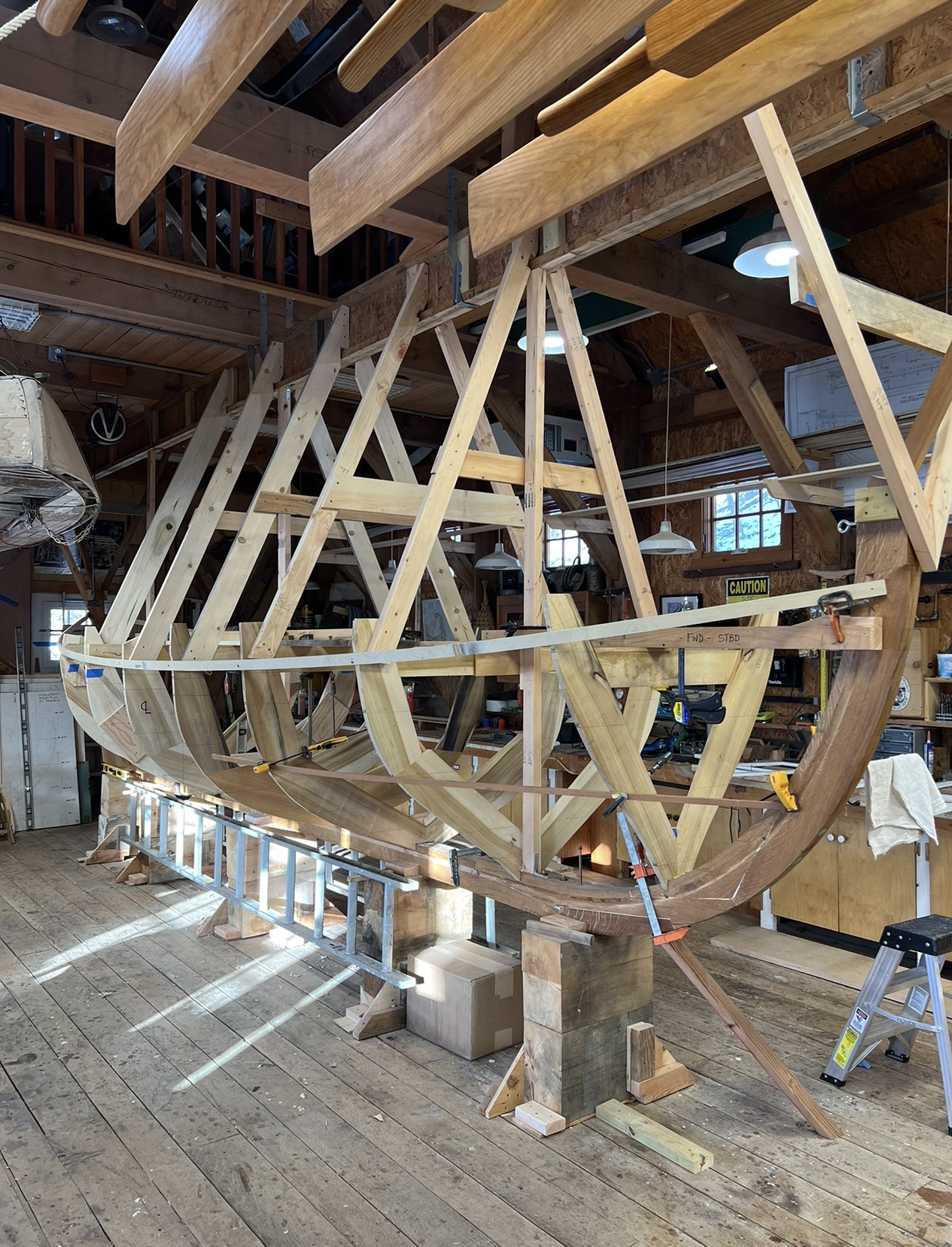Owner’s Description
THE WHALEBOAT 1776 PROJECT
In the Fall of 2022, the Village of Port Jefferson Town Historian, Chris Ryon, approached LISEC with a unique proposition; in an effort to promote the story of Port Jefferson’s role in the Culper Spy Ring, would the Bayles Boat Shop undertake construction of a replica whaleboat to help tell that story. It was strongly felt that the building of the whaleboat would be a unique way of embracing Port Jefferson’s Maritime history and its instrumental role in the Revolutionary War effort, telling the story of our Colonial forebears involved in that struggle and engaging the community in the process. The project dovetailed perfectly with a key element of LISEC’s mission; to help perpetuate the legacy and art of wooden boat building here in Port Jefferson. Working in partnership with the Village of Port Jefferson, the Whaleboat 1776 Project will also represent the village’s early entry in preparation for America’s 250th anniversary celebrations in 2026. It is expected that the project will take about two years to complete and we are hoping for a launching day celebration sometime in Fall of 2024.The History
During the American War for Independence Long Island Sound was the scene of many engagements involving whaleboats. The Loyalists (Tories) from Long Island raided the Connecticut shore and the rebels (Patriots) from Connecticut returned the compliment even going as far overland to the Great South Bay. In present day, the United States Navy (USN) employs mechanically propelled double-ended ships’ boats about 26′ long that are called whaleboats. Considering the missions of the USN it is extremely unlikely that these boats are ever used in the pursuit and capture of whales.Thus, the term whaleboat simply describes a useful type of double-ended boat whose ancestors may very well have been used in the whale fishery.
In 1776 the term whaleboat was used for exactly the same purpose, to designate a well-known and useful type of double-ended boat. It is true that some whaleboats of 1776 were employed for catching whales but many more were used for privateering and other military and naval operations during the Revolutionary War. This fact is particularly very much true here in Long Island where the whaleboat served as the vessel of choice for Culper Spy Ring courier, Caleb Brewster, and his crews. Light, fast, quiet and easy for men to pick up and hide, these roughly 25 to 30 foot crafts were fairly stealthy for their time. While these attributes benefitted Patriot spies, they also assisted Privateers; basically pirates with government commissions.The Whaleboat
Based off plans drawn up by the late William A.Baker, naval architect and renowned naval historian, the whaleboat will be a fully seaworthy craft complete with sail, oars and a bow mounted swivel gun. The dimensions, 24′ 5″ length overall with a maximum breadth of 6′, may seem a bit small when compared to the American whaling vessels of the mid to late 19th century but the length is very much in line with historical research concerning the size of whaleboats in the 1780’s.
Built as a classic double-ender she has a skeg and rudder which would have been more convenient than a steering oar for the long pulls across the sound. The whaleboat has one mast that carries a simple spritsail intended for use in fair winds to aid the oarsmen. The construction is clinker (lapped) style with Eastern White Cedar planking over sawn White Oak frames, standard for her day. Following a practice as old as the Viking ships, her planking is fitted around molds, the ends secured to the stem and sternpost, and the laps riveted before the frames are inserted. Using sawn versus steamed frames may seem out of place for such a relatively small craft but the steam bending of frames (and planking too), common practice in todays boatbuilding, was unknown in 1776. The six 16 foot oars and six paddles are fashioned from American White Ash which was both plentiful and the hardwood of choice for oar stock for the colonial boat builders of 1776.Whaleboat 1776 Construction Plan drawn by William A. Baker for the Darien Historical Society
Today however, due to the blight caused by the Emerald Ash Borer, supplies are limited especially in lengths approaching 16 feet. We were fortunate however to find an upstate source for this beautiful hardwood which we immediately secured for the project.
Photos
Map
No Records Found
Sorry, no records were found. Please adjust your search criteria and try again.
Google Map Not Loaded
Sorry, unable to load Google Maps API.
Comments













